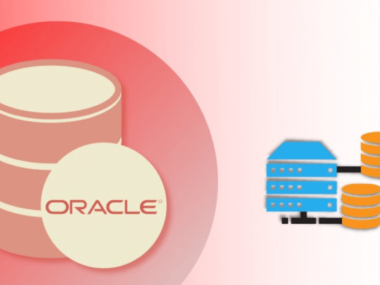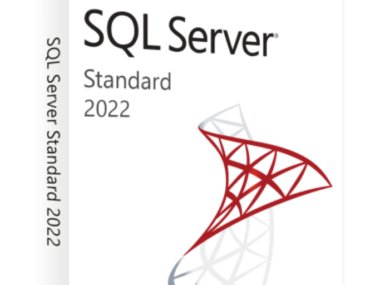Also Read
The Teradata Database is a relational database management system (RDBMS). The purpose of this is to design for data warehousing and analytics. It specializes in large-scale data handling and complex query execution.
The Teradata Database consolidates data from various sources into a central repository. It serves businesses by enabling advanced data analytics.
With its scalable architecture, it excels at delivering in-depth insights across the enterprise. It also supports decision-making processes with speed and efficiency.
This robust system employs parallel processing to handle massive workloads. It enables real-time analytics on large datasets.
It also offers high performance, availability, and fault tolerance. This makes it a popular choice among organizations with extensive data management needs.
The Teradata Database has integration capabilities. It supports mixed-data warehouse environments. This ensures flexibility in an evolving data landscape.

Credit: www.analyticsinsight.net
What Is The Teradata Database?
The Teradata Database is a pivotal pillar in data warehousing and big data analytics. It has redefined the way businesses leverage vast amounts of data.
But what exactly is it? In essence, Teradata offers a relational database management system (RDBMS). It is perfectly tailored for scalable data warehousing and intensive data analytics.
Let’s delve into the core principles and historical backdrop. They have made the Teradata Database an industry benchmark. It efficiently handles large-scale analytical workloads.
Understanding The Foundational Principles
The Teradata Database is built on a set of foundational principles. These distinctively position it in the data management landscape.
-
Massive Parallel Processing (MPP) Architecture: Massive Parallel Processing (MPP) architecture enables the database to handle many tasks. This contributes to its impressive speed and scalability.
-
Shared Nothing Architecture: In the Shared Nothing Architecture, each node in the database operates. It has its own memory and disk. This minimizes bottlenecks and maximizes system efficiency.
-
Linear Scalability: The system’s capacity to grow seamlessly without compromising on performance is fundamental to its design.
-
Full-Fledged RDBMS: It provides robust support for SQL (Structured Query Language), ensuring compatibility with a wide array of data types and compliance with industry standards.
-
Integrated Workload Management: The database features sophisticated tools to prioritize tasks and manage the system’s workload effectively.
Teradata’s unified approach ensures that data management processes are efficient, secure, resilient, and high-performing. This approach caters to diverse and complex queries in data-intensive environments.
Historical Evolution And Impact On Big Data Analytics
The Teradata Database has evolved. It shows how much it has affected data analytics.
-
In the 1980s, Teradata pioneered the use of parallel processing architectures for data warehousing.
-
Over the decades, Teradata has incrementally refined its technology. It has maintained its status as a frontrunner in supporting large-scale analytics.
-
It has embraced advances like in-memory processing. It has also embraced cloud integration and support for diverse data types. It also supports unstructured data.
Teradata has been instrumental in helping companies use big data analytics.
Teradata has empowered businesses with a robust platform. It can query across petabytes of data. This helps businesses uncover valuable insights, optimize operations, and make data-driven decisions.
Key Features And Capabilities
The Teradata Database is a powerhouse in the world of data processing and analytics. It brings a robust set of capabilities to the table. The designers have created the set to handle massive volumes of data effortlessly.
Businesses increasingly rely on data-driven decisions. It’s essential to have a database that stores immense amounts of information. The database must also provide the tools and features necessary. It should enable the extraction of valuable insights from this data.
Here, we will explore some of the key features and capabilities of the Teradata Database. Enterprises prefer Teradata databases. They are looking to scale their data analytics.
Scalability And Performance
Scalability is the backbone of modern databases. The Teradata Database thrives in this domain. It can grow alongside a business. It can manage anything from terabytes to petabytes of data without a hitch.
The seamless scalability ensures that organizations can accommodate increasing data volumes. It also maintains high levels of performance.
Teradata uses its unique architecture to deliver fast query execution and data retrieval. This architecture distributes the workload evenly across its nodes. It ensures that no single part of the system becomes a bottleneck.
The service it provides includes bold transaction processing and real-time analytics. Enterprises that rely on timely data analysis depend on it for informed decisions.
Advanced Query Optimization And Data Distribution
Teradata excels in query optimization. This skill is at the core of its efficient data processing capabilities.
The engineers designed its optimizer to handle the most complex queries. It identifies the most efficient paths for data retrieval. This involves an in-depth understanding of the data distribution and structure.
Sophisticated algorithms support advanced query optimization. The algorithms consider factors such as data size, distribution, and the historical performance of queries.
As a result, these optimizations reduce query run times and improve system performance. Teradata’s data distribution mechanism ensures that data is spread evenly across all its processing units. This allows for parallel processing. It significantly speeds up data handling and query response times.
-
Smart data distribution for a balanced workload
-
Faster response times through parallel processing
-
Intelligent analytics with optimized query routes
Integration And Compatibility
The Teradata Database is a powerhouse in the realm of data warehousing and analytics. Its design focuses not only on efficient data storage but also on fast query processing. It also focuses on integrating with a diverse range of systems and platforms. It also ensures compatibility.
In this deep dive, let’s explore how Teradata effortlessly merges with existing ecosystems. It incorporates essential tools and welcomes third-party applications.
Ecosystem, Tools, And Third-party Applications
The Teradata Database functions within a rich ecosystem. This ecosystem consists of interconnected tools and applications.
Large-scale businesses are the focus of this environment. It also meets their complex data needs.
Teradata enhances data management and analytics. It has an arsenal of native and third-party tools. It ensures businesses can access a comprehensive suite of features. This helps them perform at their best.
-
QueryGrid: Facilitates cross-database access and processing
-
Data Lab: Provides a sandbox for agile analytics and discovery
-
Viewpoint: Serves as a web-based management portal for system oversight
Teradata is compatible with many software providers. This enables various functions, from business intelligence tools to advanced analytics solutions.
These partnerships empower users to select the best tools for their specific needs. The Teradata environment connects the tools.
Seamless Integration With Other Big Data Platforms
Teradata’s functionality includes tight integration with other big data platforms. Organizations invested in big data can take comfort in Teradata’s collaborative nature.
It acts as a unifying force within an enterprise’s data architecture. It bridges disparate systems with grace and efficiency.
| Big Data Platform | Type of Integration with Teradata |
|---|---|
| Hadoop | Bi-directional data movement and query execution |
| Spark | Data processing and analytics extension |
| Kafka | Real-time data streaming and ingestion |
Integration channels like Teradata QueryGrid allow users to access data from these platforms. They can also orchestrate cross-platform data analytics. This leverages the strengths of each system to execute complex analytical tasks.
Teradata Database takes an open approach to integration. It is an adaptable and resilient choice for companies. They want to maintain agility in a data-driven world.
It helps to eliminate silos and enables a cohesive data strategy. It does this by providing a centralized analytics environment. This is crucial for gaining deeper insights and driving informed decisions.
Data Management And Security
Exponential data growth requires efficient management and ironclad security. These are crucial for businesses that rely on data-driven decisions.
The Teradata Database sits at the helm of this revolution. It offers unparalleled capabilities in handling extensive datasets with ease and precision.
Let’s explore how Teradata ensures optimal data management and security. This fortifies an organization’s data infrastructure.
Efficient data storage and retrieval
Efficient Data Storage And Retrieval
The Teradata Database stands out in the realm of data warehousing. It provides efficient mechanisms for data storage and retrieval.
Teradata’s unique architecture explains this efficiency. It’s designed to handle large-scale data operations.
-
Distributed Systems: Data is evenly distributed across the system, eliminating bottlenecks.
-
Parallel Processing: Simultaneous data processing accelerates query response times.
-
Columnar Storage Options: Optimized storage for varied data types enhances performance.
Organizations use these features to quickly access critical information. The features form the backbone of their decision-making processes.
Robust security measures for safeguarding sensitive information
Robust Security Measures For Safeguarding Sensitive Information
In today’s digital ecosystem, protecting sensitive information is paramount. Teradata Database uses a multifaceted security strategy. This strategy ensures data integrity and confidentiality.
-
Authentication Protocols: Stringent methods to verify and authenticate user identities.
-
Encryption: Advanced encryption standards protect data at rest and in transit.
-
Access Controls: Fine-grained permissions and roles regulate who can interact with the data.
-
Audit Mechanisms: Comprehensive auditing to track data access and changes.
These robust security measures form an impenetrable shield around the data ecosystem. They foster trust and compliance with regulatory standards.
Frequently Asked Questions On What Is The Teradata Database?
What Is the Difference Between Teradata and SQL?
Teradata is a company providing database-related products and services. SQL is a language used to manage and manipulate databases. Teradata uses SQL for querying data. It offers extra tools and capabilities for data warehousing.
What Are the Main Features of the Teradata Database?
The Teradata database offers parallel processing and high scalability. It also has robust security features and supports diverse data warehouses. It handles large volumes of data and provides real-time analytics.
What is the Teradata default database?
Teradata named the default database “DBC,” which stands for Database Computer. It houses the system’s data dictionary and users’ information.
Is Teradata the As Oracle?
Teradata and Oracle are different entities. Teradata specializes in data warehousing and analytics. Oracle offers a broader range of software and hardware products, including databases.
Conclusion
Teradata Database stands as a robust solution for large-scale data warehousing. Its unique architecture and advanced querying capabilities empower businesses. They can harness their data’s full potential.
By embracing this powerful technology, companies can transform raw data into actionable insights. This ensures a competitive edge in the data-driven market.
Choose Teradata to scale your analytical endeavors to new heights.













1 comment